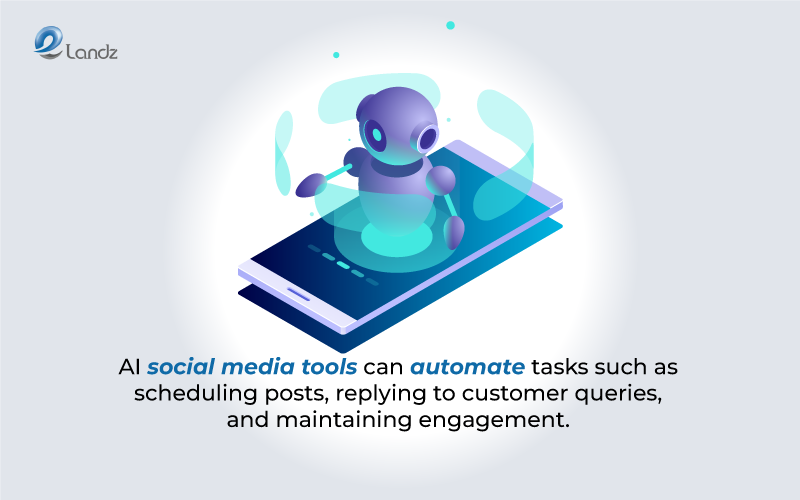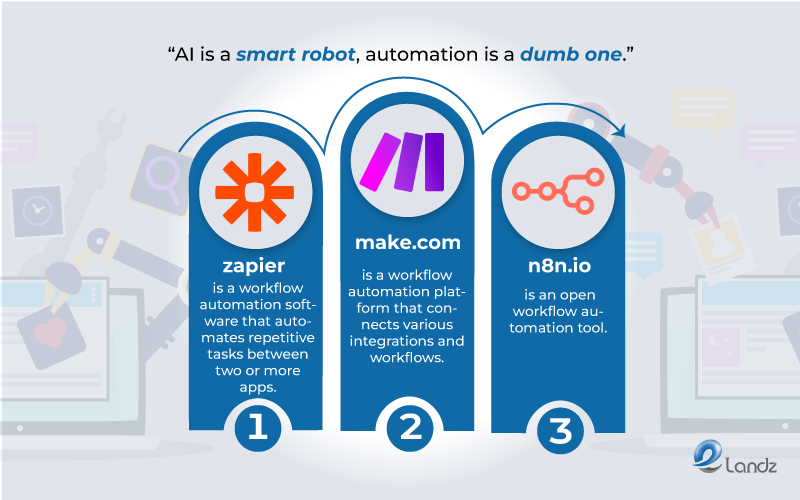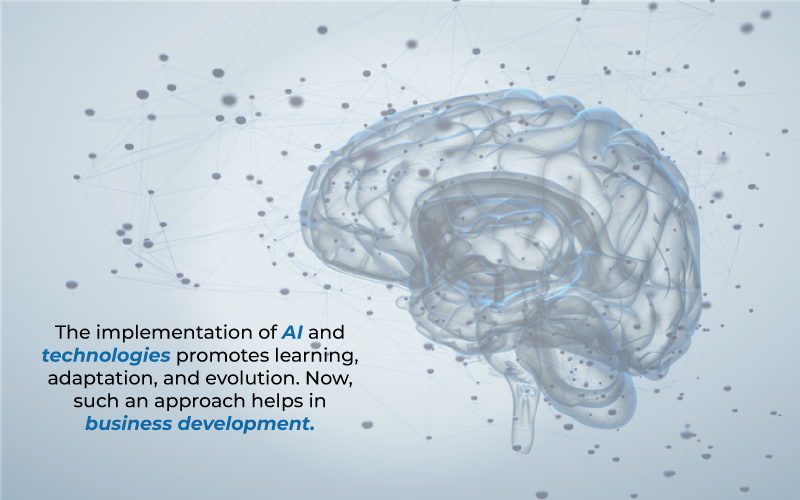
Automate Mundane Tasks with AI: A Step-by-Step Guide
04 Aug 2024Introduction
Did you know that 64% of businesses believe that artificial intelligence will help increase their overall efficiency? How can you automate mundane tasks with AI?
The burden of repetitive tasks takes up energy and extra hours. If you are a startup founder, prioritizing team efficiency is pivotal in producing outstanding results.
Now, it’s time to delve into the details of our step-by-step guide!
Understanding AI for Automation
First, let’s deconstruct the meaning of AI for automation. The term has become a headline amongst startups, tech companies, and company founders.
Automation is any technology that reduces the need for human labor, the nature of work is similar to a regimen in most cases. Artificial intelligence mimics humans and interacts with machines so that they can think for themselves.
Should we make it simpler? Automation and AI are about setting up machines to follow commands and solve problems for themselves.
To sum it up, it’s like teaching tricks to your pet!
Types of AI For Automations
Before utilizing the latest artificial intelligence tools, or AI automation strategies, you shouldn’t shy away from expert opinions. More than that, the internet is a pool of information, experiences, and insights.
Therefore, it is crucial to have some background knowledge of the types of AI for automating mundane tasks.
AI vs Machine Learning
All these terms might sound a bit confusing. At their core, they are just subsets of artificial intelligence. People often mix AI and ML, however, machine learning is still different. ML is what helps a machine to learn on its own through data analysis.
Machine learning is one method of creating human-like cognition. By converting raw data into actionable insights, ML exhibits immense potential.
AI vs Natural Language Processing (NLP)
Natural language processing deals with the manipulation of human language. Shockingly enough, NLP has been around for quite some time. Its history goes back to 1954 when the first experiment involved the translation of 60 Russian sentences to English!
Today, the applications of NLP include machine translation, speech recognition, chatbots, and sentiment analysis. Alexa and Siri also use NLP.
AI vs Robotic Process Automation (RPA)
RPA is an automation technology that integrates with other applications to behave like a human worker.
“.. is a software technology that automates repetitive, rule-based processes…”
Rajoo Jhaa, digital strategy expert.
In short, it is a business process automation with which you can define a set of instructions for a robot or bot to perform.
Step-by-Step Guide to Automate Tasks
The section below will focus on how you can automate mundane tasks in your business with AI.
Say you’re writing an article on HubSpot’s advantages or the latest marketing tech trends, you must have a starting point.
As mentioned above, some background research goes a long way. While being action-oriented is a pro, being equipped with the right information is necessary.
Assess Your Needs
Routine office errands can be a huge pain! In some cases, they can become performance blockers. Are you a startup founder, team lead, or manager? The first step is to sit down with your team and identify tasks that need AI automation.
A more professional approach would be to perform a task audit, and even compile a report. Before you start compiling a document, ask yourself these questions.
Which tasks do you want to automate? (email filtering, data entry, calendar management, etc)
What kind of work takes the most time?
What impact would AI and automation have on the outcome?
What are your objectives and goals for the implementation of AI?
Another tip to remember is that collaboration is essential in achieving results. Team coordination between the tech team, team leader, business department, etc is integral.
AI Automation Examples
The fear of the mundane is worse than the fear of the unknown. Here’s a list of some tedious business activities that require AI automation.
AI project management calendars can manage company schedules, sync team calendars, and provide relevant statistics.
Emailing filtering involves inbox management and deleting unwanted mail. AI algorithms can automate email cleaning and filter out spam emails.
AI data managers can enter relevant information from documents, and invoices into spreadsheets.
AI social media tools can automate tasks such as scheduling posts, replying to customer queries, and maintaining engagement.

Select Your AI Tool
Now you have the list of tasks you have to automate using AI, the next phase focuses on choosing suitable artificial intelligence tools. Pick an AI tool that easily integrates with your current tech stack.
For example, the plan is to automate repetitive tasks using AI chatbots. In such a situation, choosing the right AI chatbot platform makes all the difference. Botpress and Kore.ai are some popular names.
Tools and AI Automation Technologies
AI is a smart robot, automation is a dumb one.
The discussion on AI automation tools is still ongoing. Some popular AI tools include:
Zapier is a workflow automation software that automates repetitive tasks between two or more apps.
Make.com is a workflow automation platform that connects various integrations and workflows.
n8n.io is an open workflow automation tool.

Set Up and Configure the Tool
What’s the next step in our step-by-step guide to automate mundane tasks with AI? Well, let’s find out.
Whether it is workflow automation, data entry, or calendar management, tool configuration is a pivotal part of setting up an AI automation system.
For example, Microsoft Azure Suite offers task automation solutions. The team needs to provide the tools with data to train on, the process demands time and precision. Initial configuration involves installation and integration of the tool with an existing database.
Customization
Tailor the tool to specific tasks, also the company should value data governance practices and data quality at this stage. High-quality data means that the AI model will generate optimal outcomes.
“It's not just about 'having' AI in your business process; it's about implementing it correctly and learning how to use it!”
When and How to Automate with AI: A Guide
Coming back to rules, the establishment of parameters is a must. It is what plays a prominent role in accelerating outputs.
Training and Testing
The secret to creating a full-proof AI automation setup is starting small. Begin by automating a few internal processes, and testing them out. Training the AI has two substages- inputting data and teaching the AI-powered model to recognize patterns.
Testing the AI Automation
Think of intelligent automation as a specialized project, that’s when the team will treat it like one. Concentrate on the tasks that add value, minimize errors, and assess the impact.
For instance, the team is setting up a social media calendar for marketing. Through advanced AI analytics, marketers can schedule suitable posting times for releasing content.
Optimizing Automation of AI
Test, test, test, iterate, and then test again. Work with your team to compile a list of improvements and gradually scale up. Adjust settings according to performance and AI strategy framework.
In the case of a social media calendar, the engagement would reflect areas that need work.
Gather Feedback
Teamwork makes the dream work! Always keep team members in the loop and pay attention to user feedback.
The observations and experiences of your employees can assist in decision-making. As a startup founder or a manager, you know that the best productivity occurs when everyone is in sync.
Benefits of Automating Mundane Tasks with AI
Think about it, a workplace free from the shackles of data entry and invoice processing. Automation and AI are not only the present but the future of work. Intelligent automation is the life preserver your organization needs.
Increased Efficiency
AI will have an estimated 21% net increase on the United States GDP by 2030. Do you want to escape the monotony of repetitive tasks? It is time to upskill your workers and invest in the latest tech solutions.
Not only do artificial intelligence and automation save time, it saves precious resources. Your team can invest their time in brainstorming, coming up with ideas, and strategizing.
““....employees can focus their time and energy on higher-value activities that require human judgment, creativity, and problem-solving skills.”
High Precision
If a task isn’t getting the brain juices running, and makes a person feel dull, it can become prone to errors. Moreover, repetitive tasks can become mind-numbing. Most jobs require accuracy and attention to detail.
AI-driven automation is your hero on a rainy day. AI can process unimaginable volumes of data through advanced algorithms and machine learning models. That too, at lightning-fast speed.
The company can bid farewell to manual errors since AI and automation nurture high accuracy.
Employee Mental Wellbeing

At this time and age, even business owners are beginning to see the advantages of employee mental well-being. Surely, the state of one’s mind affects how they work.
Recently, a paper on the “Digital well-being of Employees” mentions several interesting pointers. The implementation of AI and technologies promotes learning, adaptation, and evolution. Now, such an approach helps in business development.
AI-based automation isn’t just beneficial for customers.
Moreover, it can streamline administrative tasks and even provide personalized support to employees, something we overlook. Employees can even acquire new skills with AI-powered adaptive learning platforms.
The marriage between project learning methodologies and AI adoption gives employees a sense of ownership. Organizations can tailor AI automation solutions to meet specific business goals.
AI Automation Challenges
We hope you can now use AI to automate mundane tasks with our step-by-step guide. However, the integration of AI systems comes with its hurdles. That is why, investing in artificial intelligence strategies and technical expertise is imperative.
Over-reliance on AI
Relying solely on automation and AI to streamline tasks is not the solution. Human monitoring and feedback are what results in the best custom tech solutions. The debate on superintelligent AI is gaining momentum.
Too much dependence on artificial intelligence creates workers’ fear and loss of spirit. Training of AI models is all about feeding them data. In the long run, algorithm bias can lead to the worst consequences.
A balance is mandatory to guarantee the safe implementation of AI automation.
Privacy and Security Concerns
The terms sensitive data make anyone feel queasy. Since AI systems handle so much data, it automatically becomes a source of fear. By 2025, 80% of enterprises will adopt AI-enhanced cybersecurity technologies.
Compliance with data regulations and government policies is the need of the hour. Careful care must be taken to CCPA AI regulations, data protection law, and AI data ethics.
Mitigation Strategies
Clear guidelines and regular audits can help in the implementation of artificial intelligence automation. Moreover, AI should be seen as a tool to augment human capabilities. Below are some methods that can help.
- Engage all departments for risk identification.
- Carry out an audit to identify risks such as privacy breaches and faulty data.
- Utilize encryption methods and access controls for data protection.
- Ensure training data is according to the target population.
- Maintain human insight and control over AI systems.
- Build insurance coverage to safeguard against potential threats.
- Pilot and test AI automation solutions in controlled environments.
Conduct assessments frequently.
Conclusion
“Rather than wringing our hands about robots taking over the world, smart organizations will embrace strategic automation use cases.
Clara Shih, an American entrepreneur
Don’t wait—take baby steps, experiment, and gradually scale your automation efforts.
The journey begins with a single step, identifying tasks ripe for automation. Being stuck in the same spot hinders a business from prospering.
As we stand on the brink of technological transformation, we must acknowledge that AI is not a fad, but a resourceful tool.
Rather than delving into the past, business leaders must accept and utilize the impressive capabilities of AI.
Humans aren’t robots, that’s what machines and AI are for!
You’ll soon see the magic of AI in your day-to-day operations. It’s never too late to take charge, act now!
FAQS
Can AI automate mundane tasks?
The answer is yes!
The world of intelligent automation offers the complete automation of repetitive tasks. Whether it’s the dreary work of data logging, sorting emails, or scheduling posts, AI automation can handle it remarkably.
Through highly advanced algorithms and machine learning models, AI-based automation can decrease the load of repetitive tasks. As a founder or techie, you must have a plan for your AI-based automation.
How to use AI to automate tasks?
You can utilize AI to automate mundane tasks with a few steps.
Otherwise, the team won’t be able to optimize intelligent automation. Below are some steps you can follow:
Do your research
Assess your needs
Pick an AI tool
Check related details, pricing, ease of use, etc.
Configure the tool and customize it accordingly
Automate internal processes train the model, and input data
Iterate and test your model. Gather feedback and make changes.
How to start learning AI for beginners?
Explore machine learning basics and AI algorithms to understand how AI models learn.
Platforms like Coursera and edX offer excellent introductory courses. Online courses can teach a lot within a shorter amount of time.
Hands-on practice is the best choice for picking concepts. Analyze datasets and work on small projects to solidify your knowledge.
AI online communities on Reddit and GitHub can serve as pools of research, latest tech trends, and tech updates.
What are mundane tasks in artificial intelligence?
AI excels at handling mundane tasks.
Scheduling, routine customer service interactions, and report generation can become extremely dull. With automation and AI, human workers can dedicate their time to management, creative endeavors, and planning.
From small startups to big organizations, the impact of AI on the workforce is phenomenal.
As a result, businesses can multiply effectiveness, boost operations, minimize errors, and remove extra costs. AI-based automation helps to improve employee satisfaction and mental well-being.
Which technology is used to automate routine and mundane tasks?
Artificial intelligence is a vast term that has many categories.
Robotic Process Automation automated rule-based tasks by mimicking human actions. RPA employs software bots to interact with digital systems.
With these bots in action, the demand for human intervention becomes zero. They work 24/7 with high accuracy and execute repetitive processes with ease.
Artificial intelligence especially machine learning, takes automation a step further. It enables systems to learn and improve over time. It is similar to the human mind, grasping concepts, and absorbing knowledge.


